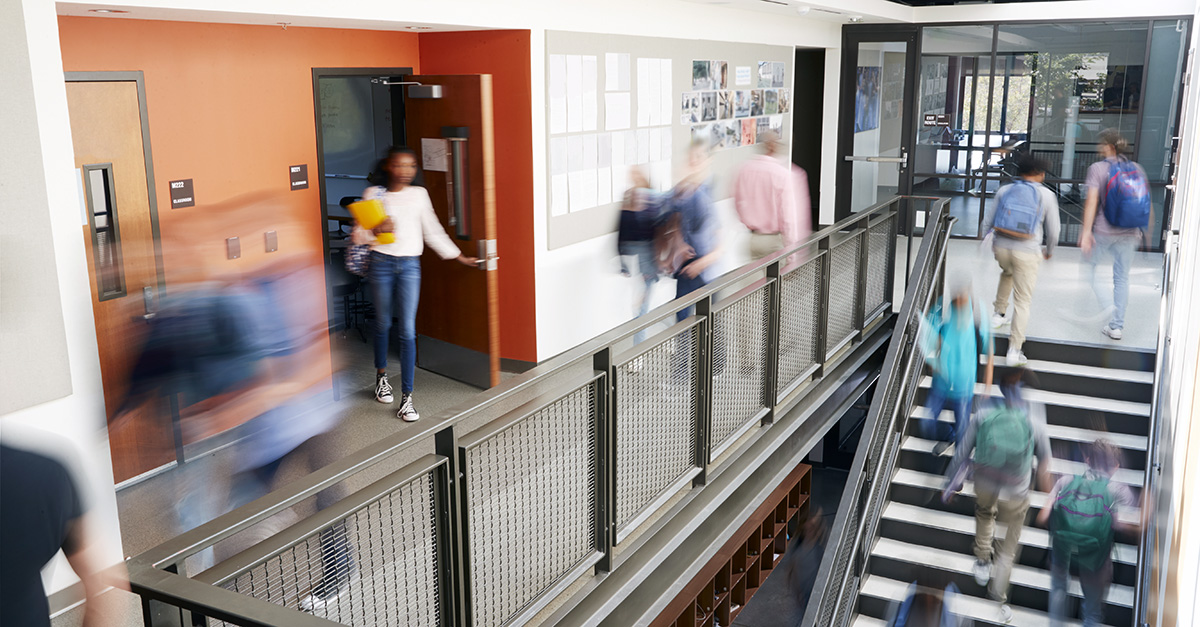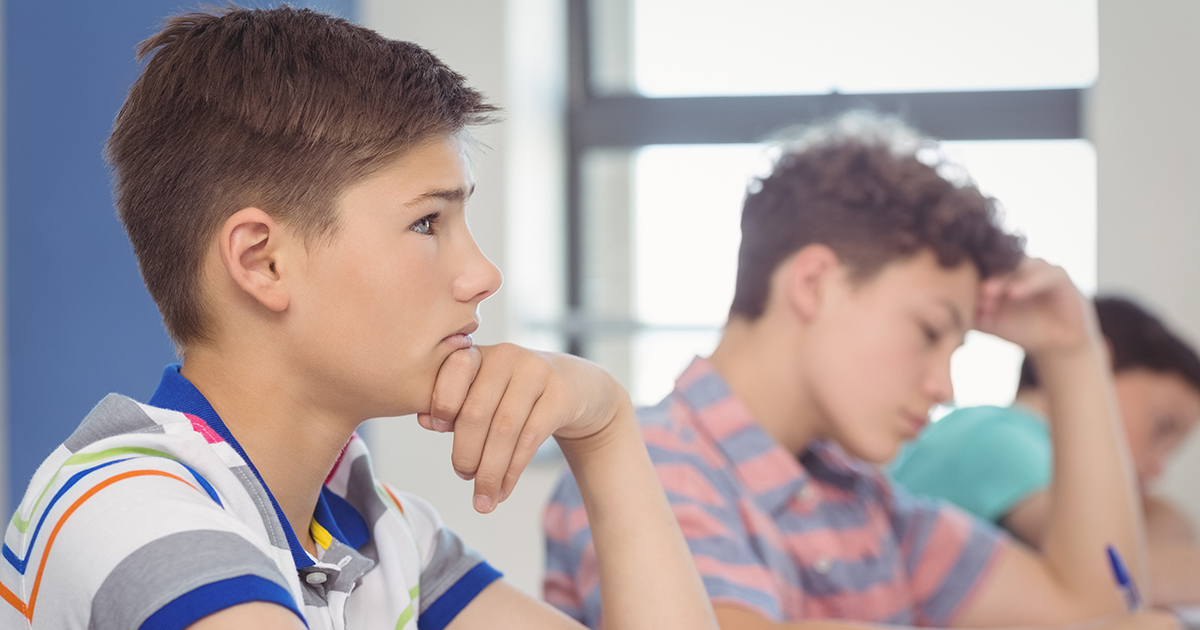“It’s Everywhere”: Middle and High School Educator Perspectives on Nicotine Use in Schools
As students head back to school for a new academic year, one thing isn’t new: e-cigarettes (or “vapes”) remain the most common tobacco product used by middle and high school students, followed by nicotine pouches.
To gauge the extent of youth vaping in schools, Truth Initiative asked middle and high school educators – including teachers, administrators, and counselors – across the U.S. to share their on-the-ground perspectives on tobacco and nicotine products, based on their day-to-day interactions with students.
Here is what they told us:
- Vaping is everywhere. Vaping is starting in middle school and becoming entrenched by ninth and 10th grades, and school bathrooms are particular hot spots.
- E-cigarettes remain the most popular tobacco product. Oral nicotine pouches, like Zyn, are increasingly being observed on school grounds.
- Vaping takes a toll on student’s mental health. Many students are combating stress and anxiety, and their vaping behaviors indicate a dependence on nicotine during the school day.
- Vaping chips away at opportunities to learn. The distraction impacts academic performance and the added responsibility of policing student vaping contributes to teacher burn-out.
- School tobacco policies are broad and can be difficult to enforce. Many policies require proof of possession, and students have become skillful at hiding products that are increasingly harder to detect.
- Vaping is a community-wide issue that extends beyond the classroom. Many educators say that more in-school resources won’t solve a wider, community-wide problem of normalized vaping among parents and peers, and broad accessibility in stores.
As detailed in this report, stories from educators build a powerful case for stronger policies that widely restrict access to youth-appealing e-cigarettes. If widespread vaping is the “new normal” at the community level, vaping will continue to interfere with academic progress in the classroom.

Hearing directly from middle and high school educators
Truth Initiative worked with Colloquial Insights to conduct a series of small, virtual focus groups with 40 middle and high school educators, including teachers, administrators, school counselors, and school-based psychologists in February 2025. Participants came from public, private, and charter schools of various sizes across the U.S., reflecting a mix of student family income levels. Funding was provided by the Bloomberg Initiative to Reduce Tobacco Use through the CDC Foundation with a grant from Bloomberg Philanthropies.
E-cigarettes continue to dominate as the tobacco product of choice among students
When educators were asked about tobacco and nicotine product use, nearly all responded about one product: vapes. According to educators, e-cigarettes were the most commonly used product by students, with many noting that it was hard to keep up with constantly evolving product types. After e-cigarettes, educators most often cited concerns about oral nicotine pouches, like Zyn. While fairly rare in middle school, Zyn pouches appeared as an emerging concern in high school, especially among 11th and 12th grade athletes.
“Vaping is everywhere in schools now—like the stories from 40 years ago about smoking.” High School Teacher, Pennsylvania
“I don't think a lot of kids use regular cigarettes anymore. I don't smell it on kids unless they're getting out of the car from parents who smoke. They make vapes look like everything now. Kids can keep them in their pencil case, and it looks like a highlighter or lip gloss.” Middle School Teacher, Colorado
“Vaping is huge”
Across the board, educators reported that vaping is pervasive in middle and high schools. High school educators frequently called tobacco and nicotine product use “pretty widespread,” reporting that “it’s everywhere” and is “a daily issue.”
“It happens multiple times a day, every day. In seventh grade alone, I deal with it at least once daily—making calls, visiting classrooms…It’s an everyday issue across all grades.” Middle School Assistant Principal, Kentucky
Educators described “increasingly brazen” students who do not attempt to conceal vaping in the hallways and around campus. Educators reported seeing students vape in front of them in hallways, as they step off school buses, and while they walk on to campus or drive home. They also see e-cigarette aerosol emanating from students’ mouths.
“It's one thing if you carry it in your backpack or in a purse and you have it and you go in the bathroom and sneak it, but I've got kids who are doing it in class in front of a teacher.” Assistant Principal, Ohio
“The problem is vaping—it's really become even more popular than cigarettes used to be.” High School Teacher, Pennsylvania

Students begin to “dabble” in vaping as early as sixth grade
Educators described a clear arc in vaping behavior among their students. They contend that sixth graders begin to “dabble” in vaping, which becomes more common by seventh and eighth grades. Educators flag eighth grade as a “turning point” that segues into full-blown, pervasive vaping by ninth and 10th grades. Vaping behavior appears to drop off by 11th and 12th grades: educators note that some students become more focused on graduating, sports, and academic performance – but acknowledge that they simply may be better at hiding their vaping as they get older. Some who vape may drop out of high school, making vaping less visible among older students, and some expand to using marijuana.
"When I first started teaching, it was exclusively seniors and maybe a couple of juniors that were doing it [vaping]. Now, I'm noticing freshmen and sophomores that are doing it the most... I feel like they're picking it up in middle school... It's a continuation.” High School Teacher, Ohio
“Our youngers, our freshmen and sophomores, are the ones getting caught because they're learning the system and figuring out what's going to work and what's not. There's a little more freedom for our juniors and seniors, so they don't have to do it on campus and then freshmen and sophomores are stuck there all day.” High School Director of Programming, Missouri
“Bathrooms are ‘ground zero’ for vaping”
Educators saw plenty of indirect evidence of vaping, including exhaling into sleeves and hoodies while in class, excessive trips to the bathroom, fruit or menthol odors in bathrooms, empty cartridges and wrappers littered on school grounds, and alarms frequently triggered by e-cigarettes.
“Cigarettes are nonexistent, but kids aren’t getting caught like they used to because there’s no smoke smell. Now, bathrooms just reek of mango, papaya, and piña colada—that’s the only evidence.” High School Teacher, Pennsylvania
Students hide e-cigarettes in increasingly inventive hiding spots, including in underwear, lunch boxes, tampon dispensers, ceiling tiles, and bathroom fixtures. Educators suggested that students use their phones to text hiding locations and patrol patterns to help each other evade detection.

Students vape to fit in, and cope with stress
Educators suggested a range of reasons why vaping occurs in middle and high school, including peer pressure, self-soothing, and experimentation. Students are commonly turning to vaping as they try to fit in with peers and assert independence from adults. Educators noted that vaping was common among students struggling with anxiety, stress, and depression.
“I definitely see some middle schoolers that are actually addicted to nicotine now, to the point where they're trying to sneak it in (school) and they get caught. They get this sort of desperation about them, because they know they're going to be struggling.” Middle School-Based Psychologist, Minnesota
“These kids are self-medicating. Vaping gives them a dopamine hit, a break from stress, a moment of comfort. It’s everywhere—their parents do it, siblings, friends. But at its core, they’re using it to escape what they’re feeling.” Middle School Assistant Principal, Ohio
“Between that [vapes] and the phones, those two addictions, irritability is a big thing. Not being able to stay focused, needing to get up and go get their fix.” High School-Based Psychologist, California
Youth vaping is an issue that extends beyond the classroom
Educators see vaping in schools as a symptom of the larger issue of vaping in the wider community. It isn’t just happening in schools: students are surrounded by vaping among their peers, as well as adults – including their own parents. Products that come in youth-appealing fruit and candy flavors are widely available at home and in stores near schools, such as vape shops and convenience stores. Educators perceive a limit to what they can do given students’ broader exposure to vaping at home and outside of school.
“I live in my [school] district, and we’re overrun with vape shops—within a six-minute walk from my house, I can hit seven of them.” High School Teacher, Pennsylvania
“Some kids see [vaping] as an adult habit, like a sixth grader drinking coffee, just mimicking behavior without fully understanding it. It’s just what’s happening around them.” Middle School Teacher, Missouri
"The parents know what the kids are doing and some of our parents do it as well. It's a learned behavior and they don't understand why the rules are different at school than at home. Sometimes we don't have the support of the parents because they don't understand why it's a big issue.” High School Dean, Florida

Vaping is a time sink and a distraction from learning
Educators’ greatest concern is that vaping impacts student grades and academic performance. It’s clear that vaping is taking away a valuable resource in school: time. Students constantly leave class to vape in the bathroom, disrupting the classroom experience and getting in the way of learning. This impacts academic performance, prevents students from learning healthier coping mechanisms, and contributes to poor mental health. Furthermore, educators wonder about the long-term impacts of vaping on student health. Educators also expressed concerns that students who do not vape are also negatively affected, making them uncomfortable using shared spaces like bathrooms, creating peer pressure to vape, and developing a broader negative perception of the school environment.
“I don't think that they're fully focused on what they should be doing in class because they're watching the clock or they're getting fidgety.” Middle School Teacher, Pennsylvania
"It makes our students feel uncomfortable that do use the bathrooms for the reason that they're supposed to be used. They feel like there's certain bathrooms they can't even go in because they don't feel comfortable or safe in there. It definitely has an impact on our culture.” High School Director of Programming, Missouri
Administrators and educators spend a lot of time monitoring, responding to, and enforcing vaping policies. Vaping distracts educators from teaching and adds to their out-of-class responsibilities. Widespread vaping also creates a culture where students who don’t vape face constant, immense peer pressure every time they go to the bathroom.
Vape detectors
Educators from several schools reported that their schools had installed vape detectors. However, many educators commented that vape detectors created more work for administrators and were largely ineffective in catching students vaping. When vape detectors were triggered, students and their e-cigarettes were long gone by the time administrators showed up to investigate.
Broad school-wide tobacco policies are difficult to enforce
Educators see evidence of vaping despite school policies regulating vaping on campus. Most educators described their schools as “drug-free” or “nicotine-/ tobacco-/ vape-free” campuses. Policies generally covered tobacco products broadly, purposely avoiding mention of specific products for fear of becoming outdated. Some said that while policies have evolved to specifically include vapes or e-cigarettes, they did not cover nicotine pouches like Zyn.
Educators suggested a general trend toward lax or inconsistent enforcement as other issues like drugs, weapons, fighting, and cell phone use take precedence. Policies largely called for in-school suspension and educational workshops for vaping, and typically required proof of possession – a huge obstacle given that students have become experts at hiding products.
"We’ve given up on bathroom patrols—no teachers monitor them anymore. Our security guards have thrown their hands up, too." High School Teacher, Pennsylvania
While some educators seek more in-school resources, others demand a community-wide shift
Most educators reported minimal vaping prevention programming for both students and staff. Schools rarely held vaping prevention assemblies, opting to focus more on messaging about other substances. Educators suggested that targeted lessons on the harms of vaping in health and gym classes, additional assemblies, and media campaigns could be useful to educate students about the dangers of vaping. Many encouraged teaching younger students coping skills that could prevent them from turning to vaping for supposed mental health relief.
However, it’s important to note that many educators pushed back on assuming additional responsibility for youth vaping prevention and cessation, which presents yet another distraction from educators’ core mission of teaching. One educator reported sparse attendance at a parents’ night the school held concerning e-cigarette use among students. Additional resources in schools are unlikely to singlehandedly solve the larger vaping problem, which extends far beyond schools into the wider community.
“One of the tough spots we are in as educators is a community just continues to expect that we will add to our list of things to educate people about. I would love to see a shift to where our community leaders identify this as a community-wide problem that needs solutions, not just hand it off to the schools to add to their to-do list.” High School Teacher, California
Resources for addressing vaping in schools
Several resources exist for educators concerned about vaping and tobacco use in school.
Truth Initiative provides a national youth vaping prevention curriculum called Vaping: Know the truth to educate students about the dangers of e-cigarette use and provide resources for quitting. As of September 2025, 1.5 million students have engaged in the free digital program, learning the facts about vaping nicotine with real-world scenarios delivered in a peer-to-peer voice. This self-led, interactive curriculum also offers quitting resources to help young people who are currently vaping through EX Program, a free and anonymous digital quitting program. Truth Initiative also provides suggestions for enforcing on-campus policies.
In addition, the Centers for Disease Control and Prevention (CDC) offers science-based and simple messages about vaping for parents, educators, and others who can influence young people. The Food and Drug Administration (FDA) also provides vaping prevention educational materials for teachers, parents, and students.
Call to Action: Urgent need for stronger policies that prevent the normalization of vaping
Vaping remains a persistent and disruptive problem in middle and high schools. Educators are overwhelmingly concerned about the negative effects of vaping on student well-being and academic performance. Vaping in schools has real consequences for instruction, significantly diverting educators’ time and energy away from their core mission of teaching.
Vaping in schools is a window into what is happening in the larger community: the normalization of vaping at home and among young people, driven by easily accessible, youth-appealing products. Eradicating youth vaping isn’t a problem educators can solve alone: strong policies paired with collective efforts between policymakers, teachers, counselors, parents, and health care providers can help curb e-cigarette use.
The following actions are needed to drive a reduction in youth vaping:
- Comprehensive flavored e-cigarette sales policies: The FDA must urgently remove all youth-appealing, flavored tobacco products from the shelves. Strong local and state policies are an important stop gap until federal policies catch up.
- Funding for comprehensive tobacco prevention and control programs in states: The U.S. Department of Health and Human Services (HHS) should restore funding to CDC’s Office on Smoking and Health, which for 25 years has been the only source of federal funding for state tobacco control programs. Youth prevention efforts, including media campaigns, are a core component of state-based efforts.
- Enforcement of nicotine product sales restrictions: Policies on the minimum legal sales age for nicotine purchases must be enforced against retailers and manufacturers. The FDA should prohibit all non-face-to-face and online sales of nicotine products. State and local policies, unless preempted, can regulate the time, place and manner of tobacco sales and marketing.
- Restricted e-cigarette marketing: The FDA must restrict e-cigarette marketing – including marketing on social media – so that it does not target or appeal to youth.
- Clear, equitably enforced school vaping policies: While all participating educators knew that tobacco and nicotine products weren’t allowed on campus, many were not aware of specifics about their school’s policy or where to access the policy. School-wide policies for vaping should be clearly outlined, easily accessible, and communicated to teachers, students, and parents.
- Supporting students in their quitting journey: While having a clear and equitably enforced school vaping policy is important, the emphasis should be on policies supporting student cessation, rather than relying on punitive measures.
- Effective mass media campaigns: Mass media public education campaigns are effective population-level interventions to prevent tobacco use among youth and young adults, influencing tobacco-related beliefs and use behaviors.
Strong policies restricting the sale and marketing of e-cigarettes can work to decrease e-cigarette use in our schools and communities, ensuring that educators and administrators can return to their primary job: teaching the next generation and keeping kids safe.
More in emerging tobacco products
Want support quitting? Join EX Program
By clicking JOIN, you agree to the Terms, Text Message Terms and Privacy Policy.
Msg&Data rates may apply; msgs are automated.


